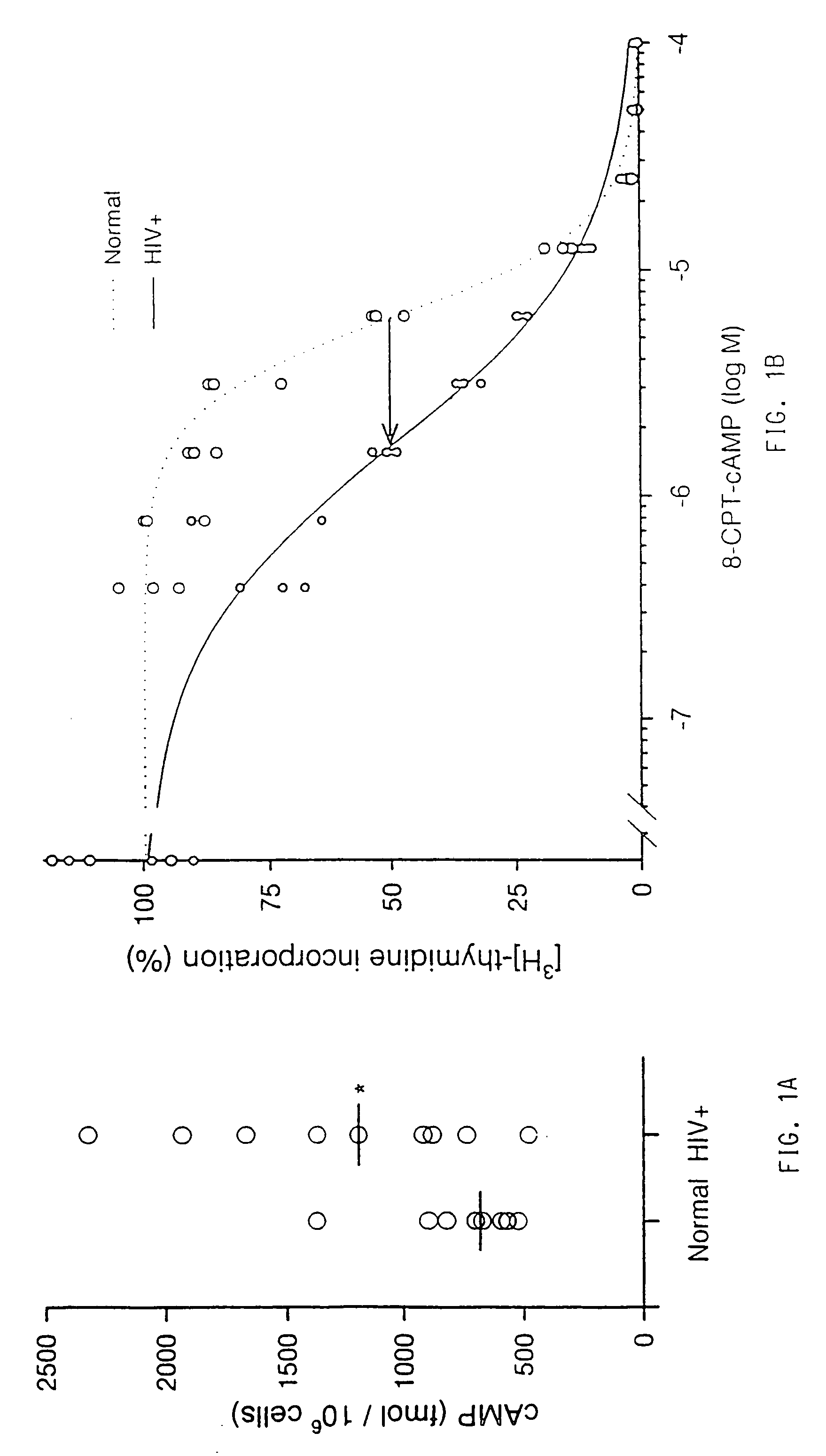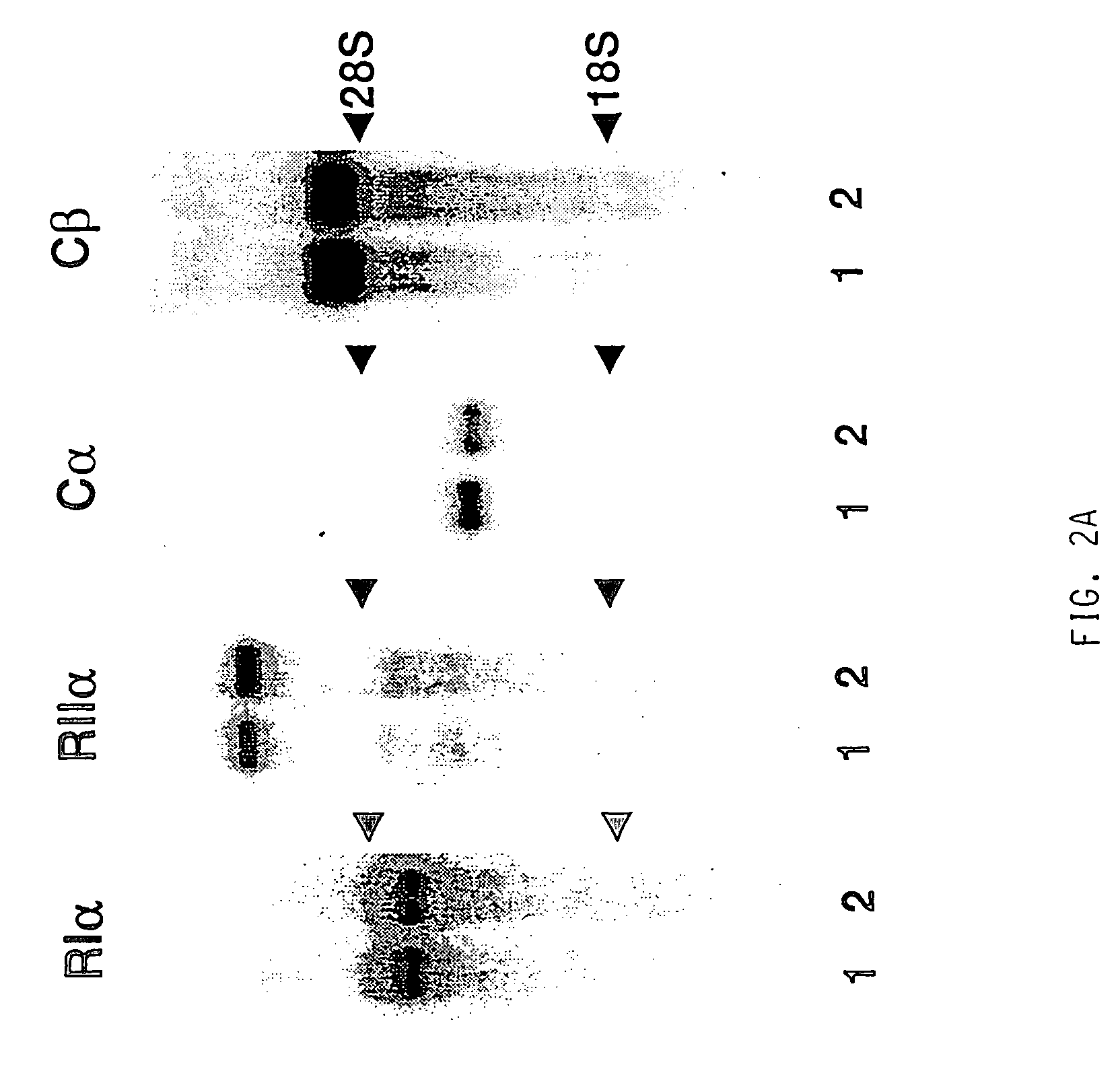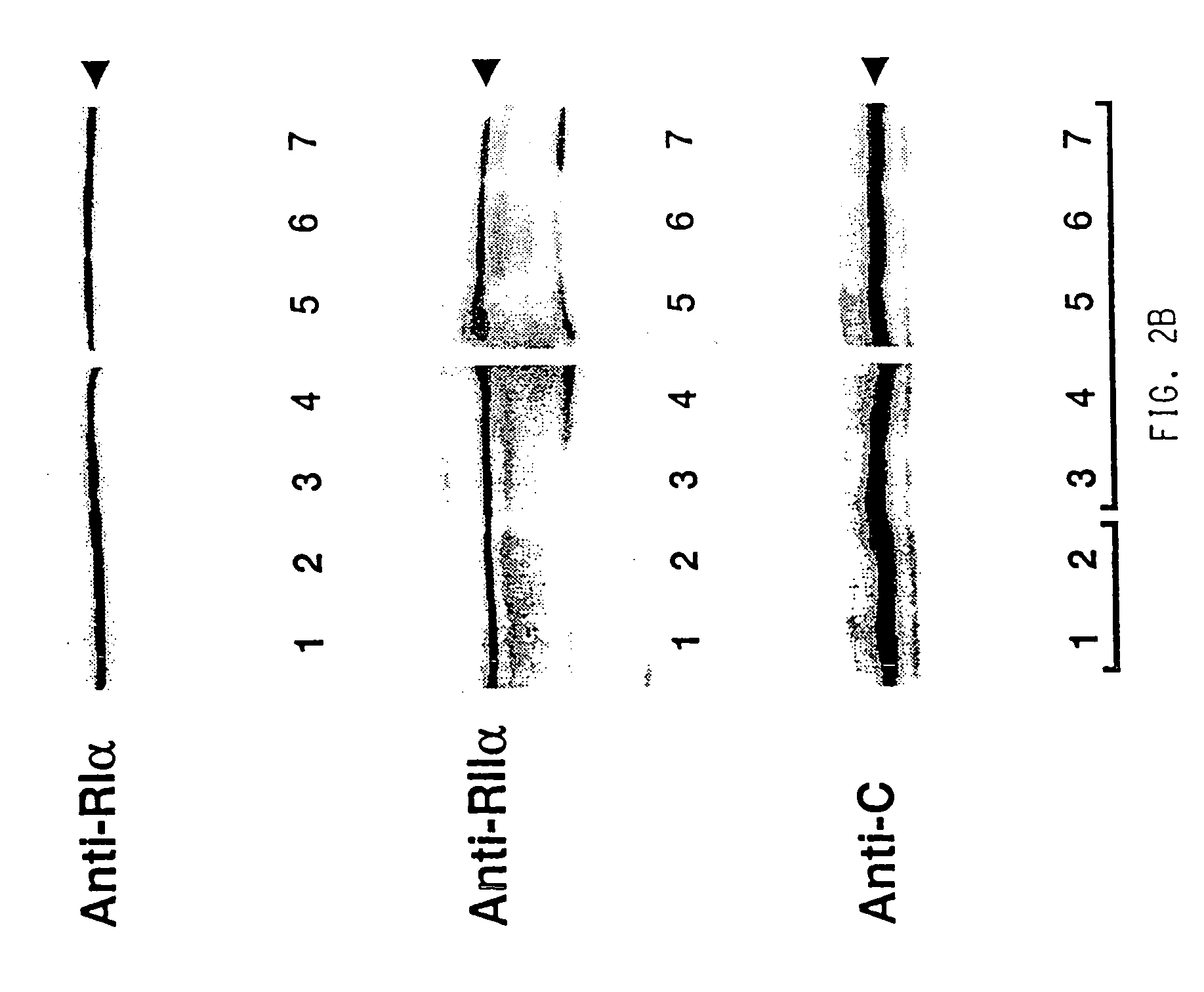Use of immunomodulating agents
a technology of immunomodulating agent and immunomodulating agent, which is applied in the direction of sugar derivatives, biocide, plant growth regulators, etc., can solve the problems of increasing the causes of morbidity and mortality in all parts of the world, increasing the incidence of opportunistic infections and cancer, and reducing so as to reverse the dysfunction of t cells. , the effect of increasing the immune function of t cells
- Summary
- Abstract
- Description
- Claims
- Application Information
AI Technical Summary
Benefits of technology
Problems solved by technology
Method used
Image
Examples
example 1
[0053]Cyclic AMP completely abolishes T cell proliferation induced through the T cell receptor / CD3-complex (TCR / CD3) as well as early tyrosine phosphorylation following engagement of the antigen receptor (1, 2). We have previously shown that activation of cAMP-dependent protein kinase (PKA) type I is necessary and sufficient to mediate the inhibitory effect of cAMP on T cell signaling, and that PKA type I redistributes to and colocalizes with the antigen receptor during activation and capping of T cells (2, 3). This serves to establish PKA type I as an acute negative modulator of T cell antigen responses and clonal expansion. T cell dysfunction is an early event in the course of HIV-infection and a major factor in the development of severe immunodeficiency. However, the molecular mechanisms by which HIV impairs T cell function have not been revealed. Two recent publications provide indications that HIV-derived peptides may increase cAMP levels in vitro (4, 5). Furthermore, cAMP trea...
example 2
[0061]The present study demonstrates for the first time increased endogenous cAMP levels in T cells from CVI patients, and even more importantly, that a selective inhibition of PKAT could markedly improve or in some cases even fully restore anti-CD3-induced T cell proliferation in CVI patients with impaired T cell function. These findings indicate a possible intracellular mechanism for the T cell defect in CVI and suggest that the cAMP / PKAI system may be a potential target for immunomodulating therapy in these patients.
The Effect of cAMP Antagonist on PBMC Proliferation
[0062]In order to address the possible role of the cAMP / PKAI system in the impaired T cell function in CVI, we first examined whether a sulfur-substituted cAMP analog (Rp-8Br-cAMPS), working as a full antagonist for PKAI (8), could improve anti-CD3 stimulated proliferation of PBMC in 20 CVI patients and 15 healthy controls. Confirming previous results (12,11), stimulated lymphocyte proliferation was significantly impa...
example 3
[0071]A ribozyme directed to the RIα subunit of protein kinase A was developed and shown to completely cleave RIα mRNA in vitro. When transfected as synthetic RNA ribozyme or as a synthetic RNA ribozyme stabilized by incorporation of 2-deoxycytosine and 2-deoxy-uracil analogs into peripheral blood CD3+ T cells, the ribozyme reduced levels of RIα protein to approximately 20% of control levels by removing the RIα mRNA. By this strategy, the majority of protein kinase A type 1 was removed from the T cells. We then assessed the immune responsiveness of CD3+ T cells transfected with ribozyme compared to control (mock) transfected T cells measured as T cell proliferation after activation of T cells by stimulation of the T cell receptor / CD3 complex (TCR / CD3). In order to simulate a T cell dysfunction as that of HIV infection, with elevated levels of cAMP and increased activation of protein kinase A type 1, we treated normal T cells with low dose (12.5 around IC50) of the cAMP analog 8-(4-c...
PUM
| Property | Measurement | Unit |
|---|---|---|
| concentrations | aaaaa | aaaaa |
| volume | aaaaa | aaaaa |
| concentrations | aaaaa | aaaaa |
Abstract
Description
Claims
Application Information
 Login to View More
Login to View More - R&D
- Intellectual Property
- Life Sciences
- Materials
- Tech Scout
- Unparalleled Data Quality
- Higher Quality Content
- 60% Fewer Hallucinations
Browse by: Latest US Patents, China's latest patents, Technical Efficacy Thesaurus, Application Domain, Technology Topic, Popular Technical Reports.
© 2025 PatSnap. All rights reserved.Legal|Privacy policy|Modern Slavery Act Transparency Statement|Sitemap|About US| Contact US: help@patsnap.com



